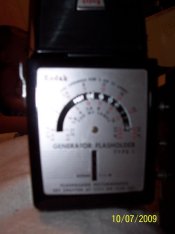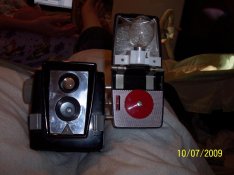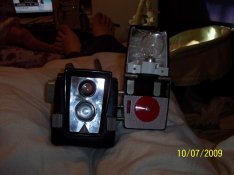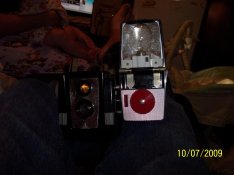Good morning;
Yes, back in the 1970's, or 1980's, or so, there were several variants of the flash bulb that gave you more than "one use." Well, at least you did not need to change the "bulb assembly" immediately after each picture. These were flash bulb assemblies that had 4, 6, 8, or even 12 individual small flash bulbs in some kind of a plastic holder that fitted into a special receptacle on the camera or onto a special socket that slid onto the flash shoe mount on the camera. The 12 bulb version had to be flipped over after 6 shots and the end with the next 6 bulbs was plugged into the socket.
The best known version of this kind of a flash device was the "FlashCube" that gave you four flashes per assembly, so you needed to change it only once every four shots. On many cameras, you wound up a spring drive motor that rotated back 90 degrees for each shot taken. On some others, there was a small motor that drove the holder around. This brought the contacts for the next bulb into position for firing.
With most of the other "multiple flash assemblies," they just stuck into the special socket and each bulb went off in sequence as each picture was taken. Some of the ways they had for sequencing the firing of the flash bulbs were interesting.
Most of these special multiple bulb units will not work with your older cameras without making up some kind of a special adapter. However, you can find regular adapters to go from a screw base socket or a bayonet base socket to the "M" type base bulb, and to the AG-1 grooved base bulb. The only real disadvantage of this sort of an adapter is that you are still changing the bulb after taking each shot. Please remember that each time you press the shutter with a flash bulb in the socket, you are literally burning the fine magnesium wire filaments inside the little glass enclosure. Once they have ignited, there is no more fine wire inside the bulb to go off again, so you put in another bulb.
Shifting to another, but related issue, the fact that you did need to change the bulb each time for each picture was one of the major justifications for the developing electronic flash units that were coming out with a Xenon gas electrical discharge flash tube, instead of the wire filament flash bulb. The "flash recycle time" for the early electronic flash units was not very different from the time required to pop out the fired bulb and replace it with a new flash bulb. The fact that the flash from the electronic flash units was so very short that it "stopped motion" was an extra in this case. That in itself was a boon to many people who tended to mash the camera shutter release and moved the camera at the time the picture was being taken.
















